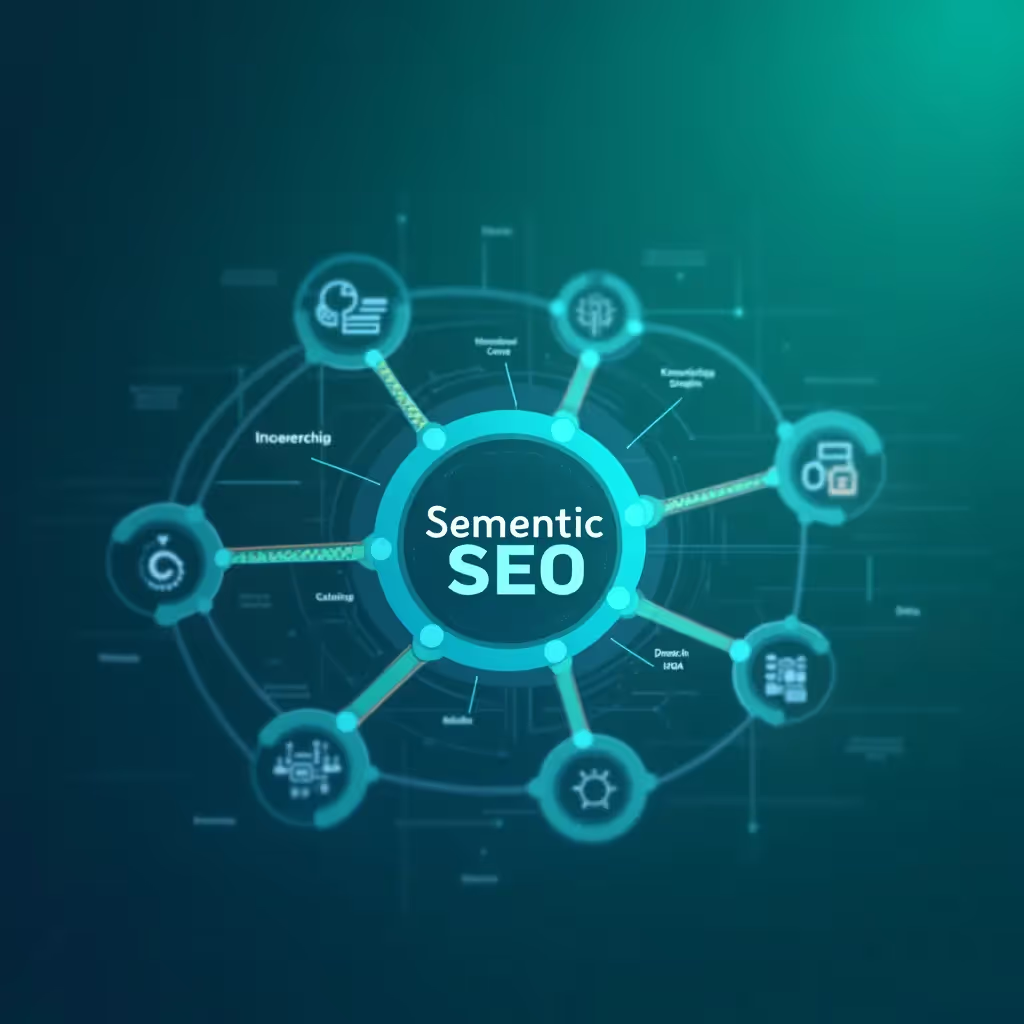What is Semantic SEO?
Semantic SEO refers to the optimization of your content to better match the search intent behind a query and provide better context for search engines like Google or Bing. Instead of merely focusing on keyword frequency, semantic SEO helps algorithms understand the actual meaning of your content and how it responds to human queries. When applied correctly, it leads to more relevant search engine results and provides searchers with more accurate, satisfying answers.
In today's SEO landscape, simply targeting keywords isn't enough. Search engines have become significantly more sophisticated, understanding the context behind words thanks to advances in semantic search. Google's RankBrain and BERT updates are some examples of algorithms that are designed to better understand semantic relationships between words and phrases.
Why is Semantic SEO Important?
Search engines are evolving to become more human-like in how they interpret and rank content. This evolution is driven by advancements in natural language processing, neural networks, and artificial intelligence (AI). The traditional single keyword-centric approach doesn’t cut it anymore. Here’s why semantic SEO is crucial:
- Improved search engine understanding: Search engines are now better at deciphering user intent, leading to more precise and relevant search results. Optimizing semantically can push your content higher because it better aligns with the intent behind the search query.
- Long-tail and related keywords: A semantically optimized page doesn’t just rank for one keyword—it can rank for a wide variety of related keywords and long-tail variations of a core keyword.
- It nurtures topical authority: When your content holistically covers specific topics, search engines consider your website an authoritative source. This can improve your overall rankings.
- Enhances user experience: By fulfilling the searcher’s intent and providing a more comprehensive answer, users find your content more valuable. A better user experience means higher engagement, which can generate more leads, shares, and conversions.
How Semantic Search Engines Work
Semantic search engines aim to deliver search results that are more relevant by understanding the meaning behind the query rather than simply matching the words. They consider several elements:
| Element | Description |
|---|---|
| Natural Language Processing (NLP) | This technology helps search engines analyze and “understand” human language the way we communicate naturally, including nuances like synonyms, context, and homonyms. |
| Latent Semantic Indexing (LSI) | LSI identifies the relationships between words and phrases beyond direct matches, enabling search engines to learn what content relates to queries. |
| Knowledge Graph | Services like Google’s Knowledge Graph gather and exhibit pertinent information from across the web, helping users find factual and interconnected information quickly. |
| User Intent | Search engines focus not just on what the user types, but also try to understand why the user is making the search to deliver better content that matches the intent. |
Google’s BERT algorithm is a good example of a semantic search engine improvement. BERT stands for Bidirectional Encoder Representations from Transformers, and it allows Google to better process the relationships between words in a sentence, creating a more substantial understanding of search intent. BERT doesn’t just look for keywords; it tries to grasp the overall sentence structure and meaning.
Best Practices for Semantic SEO
To unlock the full potential of semantic SEO, you need to refocus your content creation and SEO efforts to ensure they meet Google’s modern search mechanisms. Below are several best practices you can implement:
1. Understand and Address User Intent
One of the fundamental aspects of semantic SEO is aligning your content with search intent. This means going beyond keyword research to understand what information users are really seeking. Ask yourself, "What kind of information will solve the user's issue?" or "Why would a person type this query?" Types of search intent include:
- **Informational** - The searcher is looking for knowledge or answers to questions (e.g., "What is semantic SEO?").
- **Navigational** - The search is intended to find a specific website or webpage (e.g., "Google Analytics login").
- **Transactional** - The searcher aims to make a purchase or engage in a transaction (e.g., "buy cordless drill online").
Tailoring your content to each type of intent can significantly improve your chances of ranking well, as Google rewards pages that directly satisfy what searchers want to do.
2. Use Structured Data (Schema Markup)
Structured data helps search engines understand what your content is about. By using Schema.org markup, you can categorize and highlight specific aspects of your web content. This information helps search engines understand the different properties and attributes on a webpage, enhancing how it appears on Search Engine Results Pages (SERPs).
For example, if you own a recipe website, adding Schema markup for "recipe," "cook time," and "ingredients" will allow Google to showcase those details directly in the search results, enhancing your visibility and click-through rate.
3. Create Topic Clusters
Topic clusters are a modern way to build a web of related content around a core theme. Traditional SEO might encourage you to create individual blog posts for each keyword you’re targeting. With semantic SEO, however, it's better to create a central piece of cornerstone content (the "pillar") focused on a core theme, and link it to other related pieces (the "cluster").
For example, for a website about nutrition, a pillar page titled “The Ultimate Guide to Healthy Diets” could link to several clusters, such as “Benefits of Veganism,” “Best Supplements for Weight Loss,” and “Intermittent Fasting Explained.” These clusters should also link back to the pillar page, creating a web of related, semantically connected content.
4. Optimize for Related Entities and Co-Occurrences
Entities are "things" or concepts recognized by search engines to help them understand the context of your content. These entities might be people, places, products, or other objects. To best leverage semantic SEO, add context around the primary entity you’re focusing on by including other well-known, related entities within your text.
For example, if your content discusses the "iPhone 13," mentioning related entities such as "Apple," "iOS," or "smartphone technology" adds credibility and context that search engines can evaluate.
5. Embrace Latent Semantic Indexing (LSI) Keywords
While LSI keywords have become a bit of a buzzword, they can still help add context to your primary topic by connecting semantically related terms. Instead of sticking to exact match keywords, bring into your content related words or phrases that a search engine might expect to find when discussing a particular subject.
For a blog post about "digital marketing," you could use terms like "SEO," "content strategy," "Google Analytics," and "social media marketing" as LSI keywords to round out the content, which can enhance the semantic relevance of the page.
Measuring the Success of Semantic SEO
As with any SEO strategy, it's essential to measure the success of your efforts by tracking certain metrics. These key performance indicators (KPIs) can offer valuable insight into how well your semantic SEO strategies are working:
- Search Engine Rankings: Track how your content ranks not just for primary keywords but for a broad sample of related and long-tail phrases.
- User Engagement: Improvements in organic CTR, time on page, and bounce rates can indicate that you are succeeding at addressing user intent.
- Organic Traffic: Increased organic traffic based on semantic SEO improvements implies that the search engines are finding deeper relevance in your content.
- Topical Authority: If more of your pages on a specific topic rank well, search engines may see you as an authority, confirming the successes of your internal linking and topic clustering efforts.
Final Thoughts
Semantic SEO is at the heart of content optimization in today’s digital world. With search engines improving their understanding of intent, context, and topic relevance, brands need to adapt and align their strategies accordingly. By focusing on a user-centric approach, providing comprehensive topic coverage, and using structured data, you can significantly improve your rankings in the competitive organic search landscape.
Ultimately, the goal of semantic SEO isn’t just higher rankings—it’s providing content that meets the user’s needs more thoroughly, creating a better experience for the searcher and raising the potential for long-term gains in traffic, engagement, and conversion.





